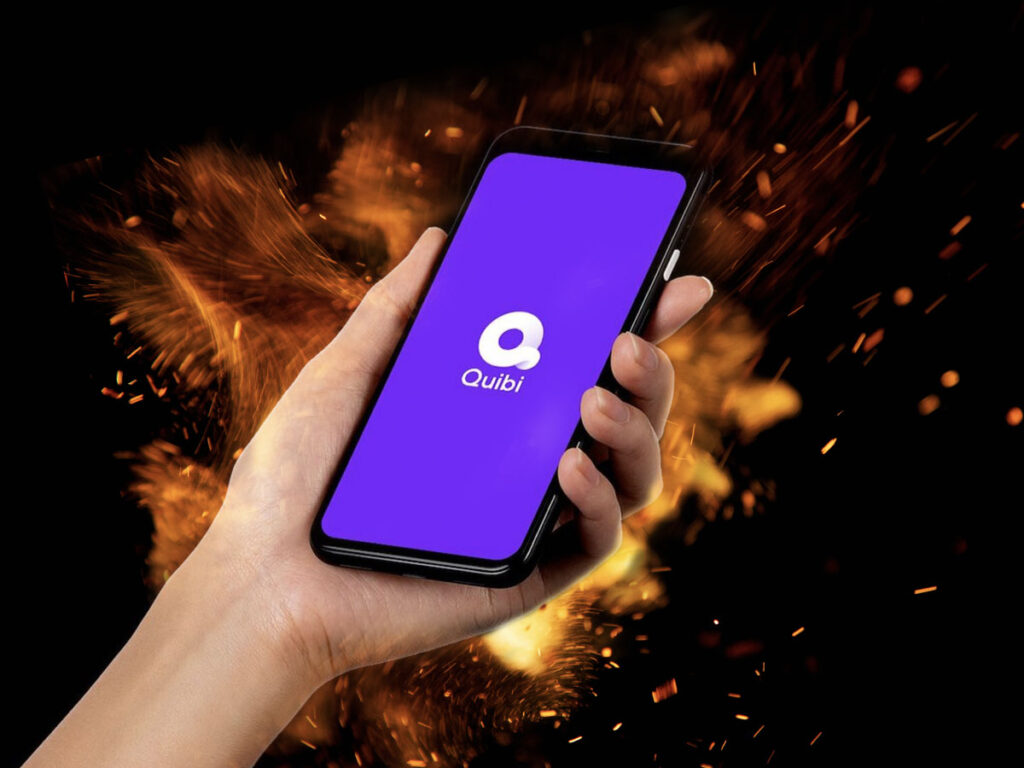CTV Retargeting 101: Complete Guide for TV Advertisers
by Frankie Karrer
8 Min Read
Check out Inc.’s excellent coverage on MNTN’s mission to make TV advertising impactful (and accessible) for all. Learn More
A focus on mobile missed TV content’s greatest strength: the television itself

5 Min Read
Quibi set out to disrupt television with an intriguing new formula of bite-sized, 8-10 minute TV show episodes streamed exclusively over mobile. It only took six months for them to realize their formula was fatally flawed.
The streaming service announced they’d be shutting their doors late last week, making it the shortest-lived streaming network to date. The announcement comes after rumors of trouble at the streaming service, with founder Jeffrey Katzenberg reportedly shopping the streaming network to the likes of Apple and Facebook with no success.
The highly touted startup, founded by Katzenberg and led by CEO Meg Whitman, featured an impressive pedigree of talented content producers and was surrounded by hype from the word go. The idea was the combination of big name stars and a mobile format would resonate with a generation of viewers who were mobile-first tech users.
Unfortunately it was not meant to be. The outbreak of COVID-19 led to millions of Americans staying home and watching TV, a development that quickly transformed Quibi’s mobile strategy into an intense liability. Furthermore its approach to content (short-form and mobile) put it up against free social platforms like TikTok, while also competing with established streaming networks like Netflix and Hulu. A perfect storm of problems, combined with a fundamental flaw to its approach, spelled doom.
Ultimately, Quibi’s reliance on mobile was its downfall. They tried to take the TV experience and make it suited for mobile and learned a hard lesson: people’s first choice for watching TV isn’t on their mobile device—it’s on television.
Mobile usage stats go up every year, short form video content has never been more popular, and streaming television is booming—so why wouldn’t a streaming network that combined all of those things not succeed?
It comes down to user experience. People are okay with watching Facebook and TikTok videos on mobile, but that’s because those experiences have traditionally been mobile ones. TV’s native format isn’t mobile. It’s a viewer sitting down on their couch, settling in, and watching their favorite show. In fact, research from Netflix shows 70% of their viewing is on television screens.
If a viewer has the option to watch a show on their TV or their phone, they’re going to pick the bigger screen (and probably use their phone to browse the web while watching). Quibi’s focus and reliance on mobile made it a natural runner-up.
And it would seem Quibi realized that too when they announced the launch of an app available on Apple TV, Amazon Fire TV, and Android TV. The mobile-TV-disruptor was coming to television screens. Unfortunately, it was launched mere days before the company shuttered—too little, too late.
While streaming television has expanded mobile viewing options for TV content, it certainly hasn’t replaced the go-to way of watching for millions of viewers. Quibi is a cautionary tale, not only for streaming TV content producers, but advertisers as well.
Streaming TV advertising is booming as advertisers follow viewers as they transition from linear to Connected TV. It’s important to note that while many advertisers see this as a better, more targeted and measurable form of TV advertising (and it is), many CTV ad solutions have a tendency to mix non CTV-inventory into their offerings. Much like Quibi, these ads run on mobile devices (thus missing out on the true TV ad experience), or even as pre-roll on video sites (which skirts the line of whether it’s even CTV inventory).
Advertisers who dedicate budget to Connected TV, and think they’re paying for a TV ad experience, need to be wary of these practices and seek out ad solutions that deliver actual CTV inventory on television screens (we’ve made this a pillar of our approach to CTV advertising, and our performance metrics have shown ads that run on TV screens drive better ad engagement). With the high engagement and brand recall driven by TV ads (which is 32% better than ad recall on the next closest device), advertisers need assurances that their ads will reach viewers while they’re streaming from their living rooms, watching their TV.
Quibi was hoping to redefine TV content consumption, but ultimately ended up as an expensive lesson for the industry. Short form video content will continue to be popular for its own reasons, but those reasons don’t have as much overlap with TV viewing as the folks at Quibi originally believed.
The draw of a true TV experience is tough to beat. As more viewers make the switch to watching more streaming television, they’ll likely keep watching it on televisions. Both streaming content producers (and advertisers) would do well to remember that fact.
Subscribe to the report Apple, Amazon, NBC and more use to get their CTV news.